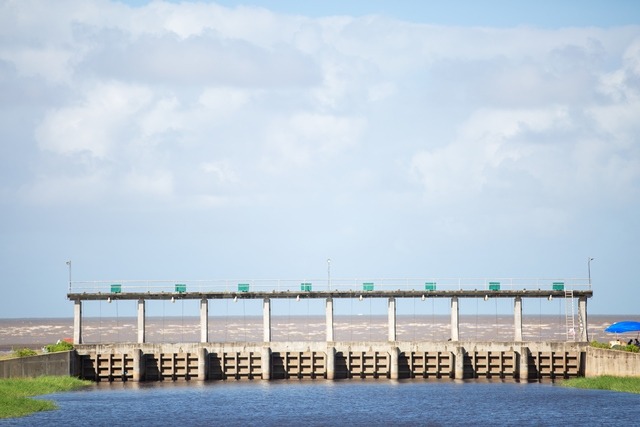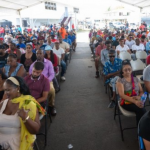– more than 45 drainage infrastructure assets to be repaired, replaced
Approximately 320,000 persons, roughly 40 per cent of Guyana’s population, are set to benefit from improved drainage infrastructure, through a US$45 million project approved by the World Bank.
This new Coastal Adaptation and Resilience Project will enhance flood risk management efforts.
In a release issued on Thursday, the World Bank recognised that Guyana is among the countries most vulnerable to climate change.
Based on recent studies, rising sea levels expose the country’s coastal agriculture to flooding and erosion, with potential GDP losses that could exceed 46.4 per cent.
To combat this, the government has employed an intricate system which features a variety of canals, culverts, sluices, and pumps.
With consistent efforts to improve operations, new management systems, and increased funding for the National Drainage and Irrigation Authority, Guyana’s landscape remains at risk of flooding.
The project will target over 45 drainage structures, focusing on sluices. These upgrades will consider future land use, population growth, and climate change to improve drainage efficiency, flood protection, and irrigation.
Alongside the Ministry of Agriculture, the project will see enhanced management and operation of the country’s drainage system, with significant upgrades to the National Drainage and Irrigation Authority’s asset management system.
“[The project will] develop technical standards for flood risk management in urban areas, and provide training to enhance personnel capacity for system operation and maintenance,” the release also stated.
World Bank Group Resident Representative for Guyana and Suriname, Diletta Doretti has recognised that the project is a critical element of Guyana’s Low Carbon Development Strategy, and aligns with the country’s vision for climate resilient growth.
“This initiative builds on a long-standing engagement between the World Bank and Guyana on strengthening resilience to flooding and natural hazards. With this operation, we are reinforcing Guyana’s efforts to maximise disaster risk management while protecting lives and reducing inequalities in the long term,” she said.
The project is financed by the Guyana REDD+ Investment Fund (GRIF), a financial intermediary fund (FIF) for the financing of activities identified under the Government of Guyana’s Low Carbon Development Strategy (LCDS).
Under this agreement, Norway compensates Guyana for curbing greenhouse gas emissions caused by deforestation and forest degradation. Guyana utilises these revenues for implementing its Low Carbon Development Strategy, and the Coastal Adaptation and Resilience Project is part of these efforts.
The government continues its commitment to coastal protection by establishing effective drainage systems.
The Hope Canal is one such intervention.
The canal, located at Hope/Dochfour, East Coast Demerara, is a multi-part channel with an eight-door sluice that drains excess water from the East Demerara Water Conservancy (EDWC) into the Atlantic Ocean to prevent flooding.
The government is constructing Hope-like canals in regions three, five, and six to provide additional storage capacity.
In this year’s budget, $72.3 billion has been allocated for the maintenance and advancement of drainage and irrigation expansion.
Works are also ongoing on pump stations and canals are also being rehabilitated. A total of 40 mobile pumps will also be purchased to further bolster D&I efforts.
Recently, a landmark Sea and River Defence Bill was passed in the National Assembly to boost mitigation and adaptation efforts against rising sea levels.






